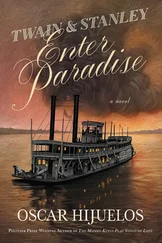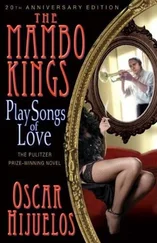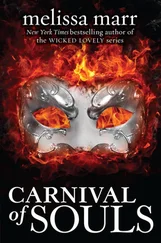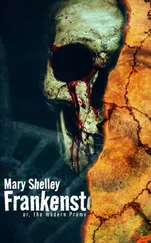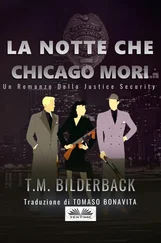For what it’s worth, even Omar the cat, with his Oriental prescience, took a strong liking to that man, perhaps for his poetic soul. On many a night, as María slept in her bed with the homely Luis snoring occasionally by her side, that gato would slumber beside her, purring sweetly and approvingly, the pads of his soft paws set gently upon her face, no matter what María happened to be dreaming.
Two years later, on an April evening in 1994, something sad happened to Dr. Teresa: this nice kid, the son of Cubans, only twelve years old, had died on her ward, and Teresita, who had had the highest hopes for him-he’d lingered for three months, and whenever she could Teresita read to him from children’s books and could not help but caress his brow whenever he gasped from pain-left the hospital feeling as if her life was sometimes intolerable. Even though she knew that, for all her successes, there was bound to be a heart-wrenching tragedy, all she wanted to do was get drunk that night. Riding her motorcycle, she had stopped off in a bar along the bay, the Sunset Cove, and after downing three double whiskeys, she began to wonder how her life might have turned out had she been born sixty years before, in Pinar del Río, like her mother. She decided that she would have ended up, in all likelihood, an ignorant, maybe happy guajira. Without worries, without such heavy responsibilities, and without having to look into the eyes of a child who was dying-what killed her the most was the fading sweetness she read in his pupils. She had a boss who, seeing the hard way she took such “episodes,” suggested that Teresita consider general practice as an internist, but she, for the life of her, couldn’t. Every now and then, as she told those kids they would be all right and felt the ebbing pulse of their soft hands in her own, their eyes, so hopeful and longing, she wanted to believe that all would be well. And at such moments of grief, Teresita daydreamed of another life, of being so good looking and shapely a cubana that she could see herself on the stage of a Havana nightclub, circa 1947, performing, for all her mother’s complaints, in so seductive a fashion as to keep an audience of horny men enthralled. But that hadn’t been her fate at all.
During her fourth whiskey, she had to laugh: over the club’s jukebox had come a version of the movie’s “Beautiful María of My Soul,” as performed by a group called Los Lobos. And that was enough for Teresita to finish her drink and leave: not because she hadn’t found it more or less pleasant but because it had nothing to do with the version she, with her Cuban pride, had grown up with. Wobbly enough, she left a five-dollar bill on the bar and then, heading out, even while in some corners of that flashy bar couples were fondling and kissing one another, mocking her solitary state, Dr. Teresita, beautiful María’s daughter, her helmet on, raced home, almost wiping out on the highway.
MARÍA WAS SITTING BEFORE THEIR GLORIOUS THIRTY-TWO-INCH RCA color TV watching a telenovela when, as Teresita walked in, she said the following: “Tell me, chica, what’s with you? Don’t you remember that we’re leaving for New York tomorrow?”
It was then that Teresita, with so many other things on her mind, recalled that she was due the next afternoon, a Saturday, in Manhattan at an oncological conference, the two of them to stay at the Grand Hyatt hotel by Grand Central Terminal. “Of course,” she said to her mother.
“So you should pack a suitcase tonight, yes?”
“I know.”
María, in the glow of the television’s screen, added, “And bring a nice dress. We’re going to a party after all.”
“A party, what’s that about?”
“Por Dios, don’t you remember that yo no sé qué cubano, that fellow Hijuelos, who wrote that book?”
“Sí, mamá.”
“Well, I called him, and when I told him we were coming to Nueva York, he invited us to a fiesta, that’s all. Una fiesta de cubanos.”
THEY FLEW UP TO NEW YORK ON A 7 A.M. FLIGHT, ARRIVING AT LA Guardia about ten thirty, then checking in to the Hyatt. Later, as María strolled north on Fifth Avenue to Central Park, shopping along the way (she had her daughter’s credit card), Teresita spent her time in an auditorium on West Fifty-seventh Street, attending a series of lectures about the neurological terrors and cancers that could, out of the blue, blight children. A cocktail party took place at four. When she came back, exhausted, to their hotel room at about six thirty, the last thing Teresita wanted to do was to head out again. But María insisted; after all, she said, “The author himself has invited us.”
IT WAS A FEW HOURS LATER THAT MARÍA AND HER DAUGHTER made their way uptown by taxi-the subways were not for María-to a building in the West Eighties and a rambling first-floor affair of some seven rooms, the domicile of none other than Chico O’Farrill, famed composer of Afro-Cuban jazz, whose songs María had often heard in the clubs back in Havana. He was standing by the front door and could not have been friendlier-in fact, he told María that she seemed awfully familiar to him somehow. Had she ever been to Mexico City? Or Havana? And for a few minutes they got to talking about Cuba, and the Havana club scene before Fidel-“I was a dancer back when,” she told him. And he snapped his fingers-it seemed that he was about to place her-but then, before they could go on with this chitchat, so many other folks came streaming in through the front door that, with Teresita feeling a little tired, they just went inside, entering an immense living room jammed with people, their numbers exaggerated by their reflections in the mirror-tiled walls.
So what happened?
Lingering by a buffet table, after moving through a crowd that included many a mambo luminary of the day, beautiful María, Teresita by her side, happened to spot, across the room, Hijuelos, long ago adopted by the O’Farrill clan as one of their own, walking in with a friend, a tall and handsome fellow whose intensely dark eyes and melancholy expression so reminded María of Nestor Castillo that for a moment she could hardly get her breath. What else could María do but wave to get the author’s attention? Not long after he had come over to greet them-“I’m so happy you could make it,” he said-María, beside herself with curiosity, just had to ask, “And who is that caballero standing over there in the corner?”
“Well,” he said. “Guess I should introduce you.”
So, with María waving her over, Teresita made her way across that bustling room, and shortly found herself standing before that rather self-effacing fellow, who had just been contentedly taking things in.
“This lady here is la Señora María García-the one I told you about, who knew your papi long ago,” Hijuelos said to his friend. “And this is her daughter, Teresa.”
He just smiled and nodded meekly.
“In any event, this is my childhood pal, un amigo de hace tiempo, Eugenio Castillo.”
“Encantada,” said María, smiling as if she were seeing Nestor again. “Encantada,” said Teresita.
Like a gentleman, he shook their hands, told each in a soft voice, “Con mucho gusto,” without being so bold as to engage their eyes directly.
With that, he had to put up with María’s onslaught of compliments: “But, my God, you look like your father! But taller and, I think, even better looking, if that’s possible!” Then, as Eugenio Castillo sipped from his drink and simply nodded, as if such words were meaningless, beautiful María turned around to find their hostess, Lupe O’Farrill, standing by her side. Once their acquaintance had been made, she led María away to introduce her around, and Hijuelos went off to get some lechón, leaving his friend Eugenio Castillo to converse alone with Teresa.
Читать дальше

